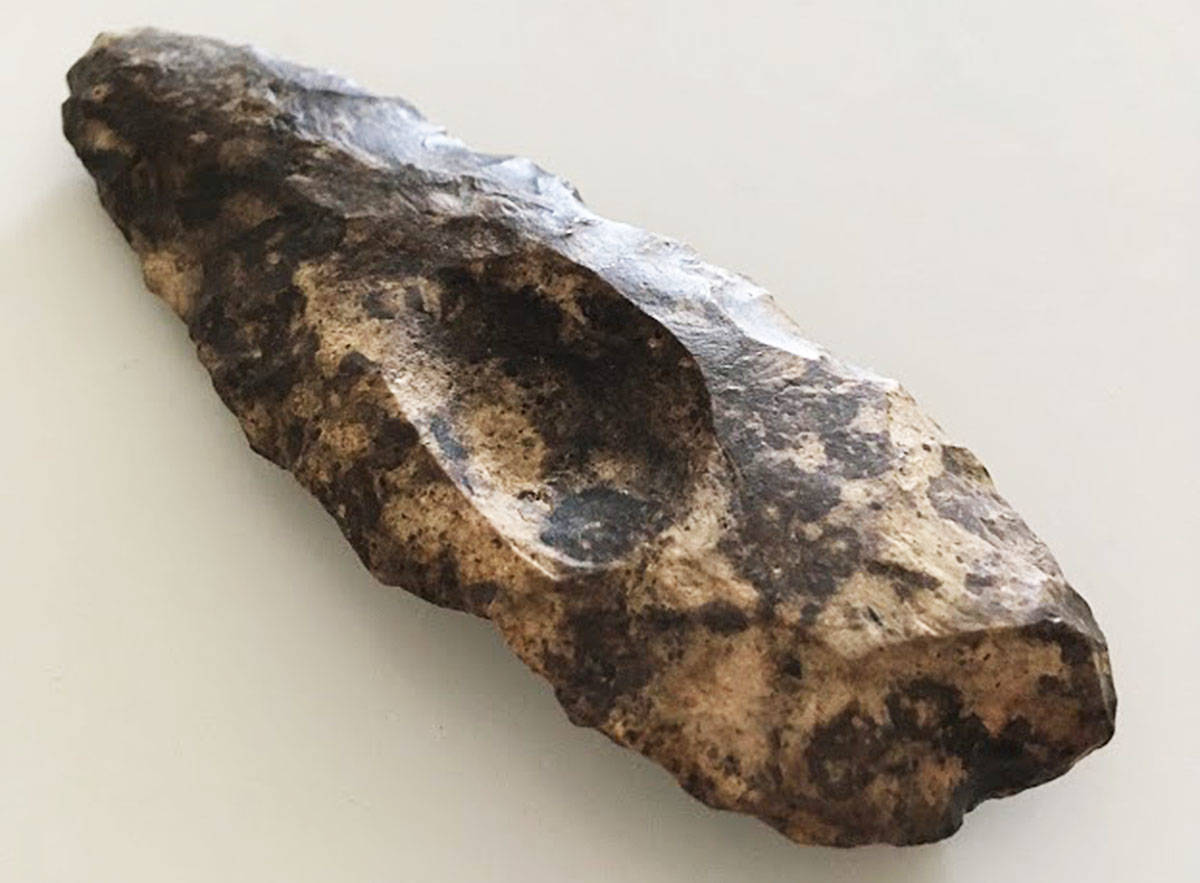Paul Brewer and his sons had never seen Alouette Lake so low – the water line a football field away from the usual summertime shoreline, revealing the normally submerged stumps from trees fallen decades earlier.
They did what boys confronted by the wonders of nature would do – went to skip rocks.
That’s when Paul’s six-year-old son Max made an exciting discovery.
“We are skimming stones, and he picked one up and said, ‘Is this a good skimmer?’” Paul recalled. “I said, ‘I don’t think we’re going to skip this one.’”
Max and his big brother Jayden, 9, felt like young Indiana Joneses after their find – a stone-age knife, with a smooth thumb insert to make it easier to grip.
“It fits your hand,” said Paul. “It feels like it’s been made to hold and scrape or cut things.”
Max couldn’t sleep for two nights.
Paul sent photos of their find to a UBC archaeologist, who confirmed it is an authentic stone tool that had been slightly damaged.
The archaeologist could not date it without seeing the tool in person.
The find raises a question about what people should do when they find such artifacts, and how significant they are.
“They are an indicator, and I’m happy to identify them,” said Val Patenaude, curator at the Maple Ridge Museum and a former archaeologist.
She said artifacts are most valuable in their original context.
However, she called the idea of people leaving artifacts in place until a site can be excavated “pie in the sky.” In the case of the Brewer boys, the site will be back under water in a matter of weeks.
Patenaude said the shores of Alouette Lake would have been busy with people in ancient times, as they travelled and camped close to waterways.
Before the watercourse was flooded for a B.C. Hydro dam, the lake would have been narrower, more of a wide spot in the river, and the stone knife found near what would have been the old shoreline – a good place for an archaeologist to dig.
“They were definitely in the right spot,” she said.
The entire Fraser River is an archaeological site, she added.
Patenaude worked on a large archaeological site before the Mary Hill Bypass was built. Some 40 people worked it over three summers, and they unearthed some 50,000 artifacts.
Patenaude said historic artifacts are the property of the nation that created them – in the case of the stone-age knife, likely the Katzie First Nation.
If people find a valuable artifact, returning them to the Katzie would be “a worthwhile thing to do.”
Patenaude and other historians ask that people not sell them because creating a market encourages more people to uncover precious artifacts on sites that should be left for professionals.
Paul said he will talk to his boys about giving the stone knife to the Katzie. He has also considered displaying it in a glass case and keeping it for his sons.
“It’s probably more important to them than to anyone else.”




